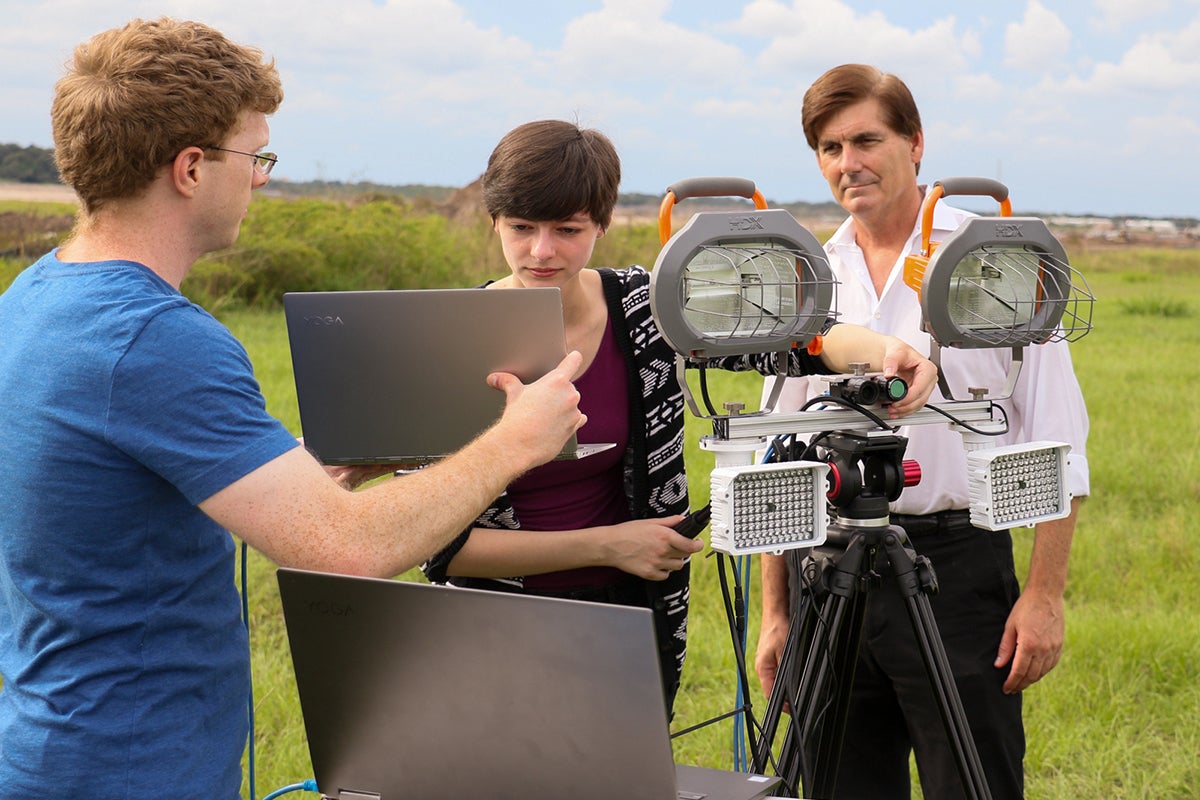With pythons destroying as many as 90 percent of some of the small mammals in the Everglades and concerns the invasive snakes could move north, new tools are needed to help their management.
That’s why University of Central Florida researchers have teamed up with imec, an international research and development company with a facility in Kissimmee, to develop a new camera that can spot pythons better than the human eyes.
“I did not realize how important this work was before I started working on this project,” says Ron Driggers, a professor in UCF’s College of Optics and Photonics who is helping lead the research. “There are roughly 150,000 pythons or more in the Everglades, and it is getting worse rapidly.”
Pythons are nonnative to Florida and were likely introduced to the environment through the release of unwanted pets from the 1970s to the 1990s. The Everglades proved to be an ideal environment for them, and they quickly became an apex predator due to their large size, long lives and ability to lay dozens of eggs. They don’t have a natural predator in Florida.
In the visible-light spectrum that people see, which is 400 to 700 nanometers, the snakes use their natural camouflage to easily blend into surrounding grass and foliage.
The camera broadens the range of sight by seeking images in the electromagnetic spectrum at about 850 nanometers. That’s the point where the distinction between the wavelengths reflected by the snake and the landscape are so great that the snakes can’t hide.
The researchers determined the optimum wavelength by measuring the reflectivity of plants in the Everglades and of several pythons until they found the wavelength range that worked best.
They then used an algorithm to reverse the negative image captured so that the snakes appear stark white against a black background.
Preliminary field tests have shown the camera to be effective, and Jennifer Hewitt, a doctoral student in UCF’s College of Optics and Photonics, is performing experiments to quantify how much better the camera is at snake detection compared to normal visible wavelengths.
Driggers’ role in the research has been to help select the best wavelengths to minimize the snake’s ability to camouflage, while imec develops the camera chips and technology to measure the reflectivity of the snakes and background foliage.
Collaborating with local universities is a very strong focus for imec, says Orges Furxhi, a research and development manager who is head of the camera systems and imaging group at imec USA, which includes the Kissimmee office.
“The imaging group at imec USA collaborated closely with Dr. Driggers and his students,” Furxhi says. “This multidisciplinary project is a prime example of why we are here – to solve local problems using global synergies.”
Researchers working on the project also include Gonzalo Vaca Castano, a computational imaging engineer with imec USA who developed machine learning algorithms for python detection; and Carl Arvidson, owner of sensor technology company Extended Reality Systems.
Driggers received his doctorate in electrical engineering from the University of Memphis. He previously worked in the Department of Defense at the U.S. Army Night Vision Laboratory, Army Research Laboratory, and Naval Research Laboratory and joined UCF in 2017. He has been collaborating with Furxhi on a number of projects for the last decade.




